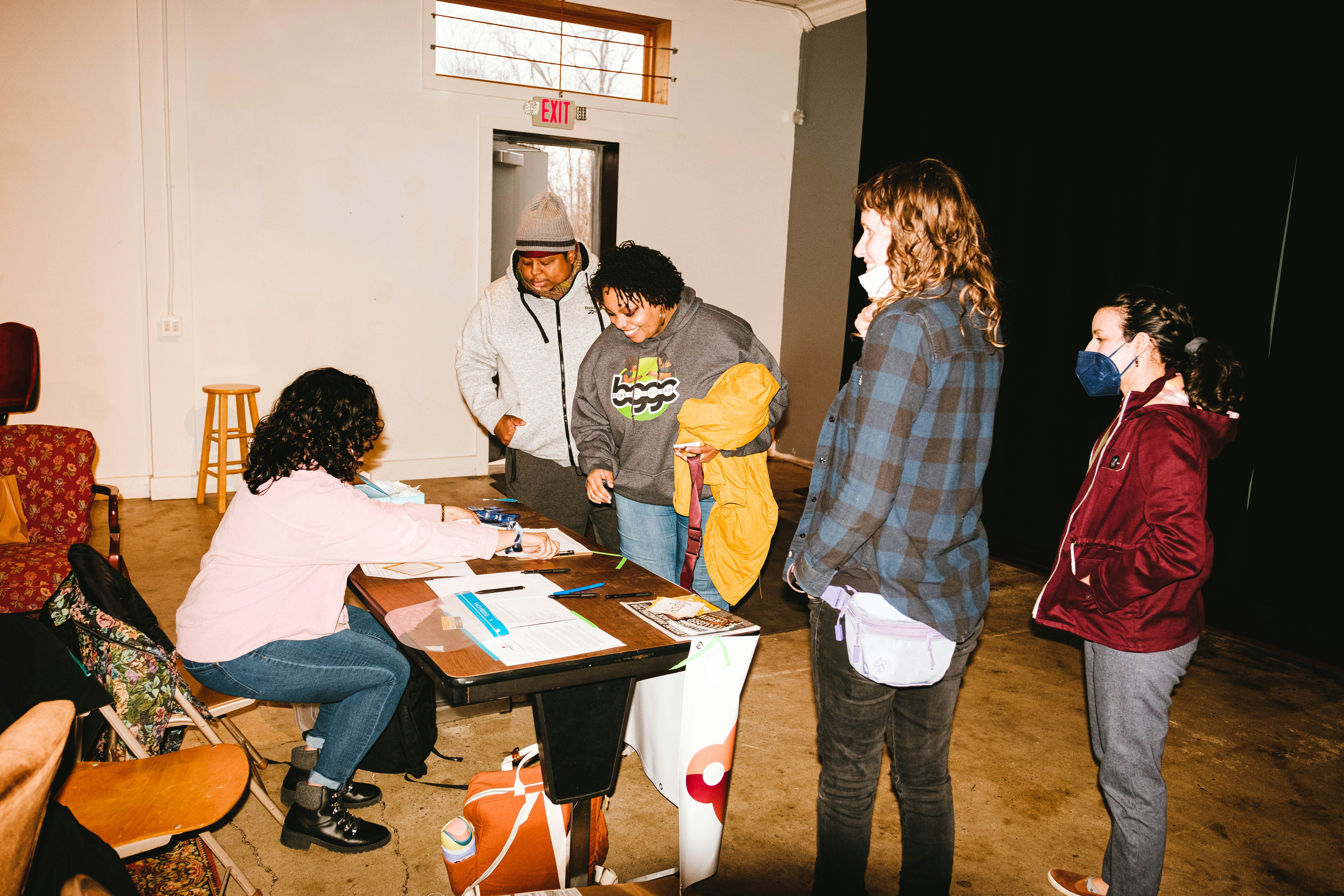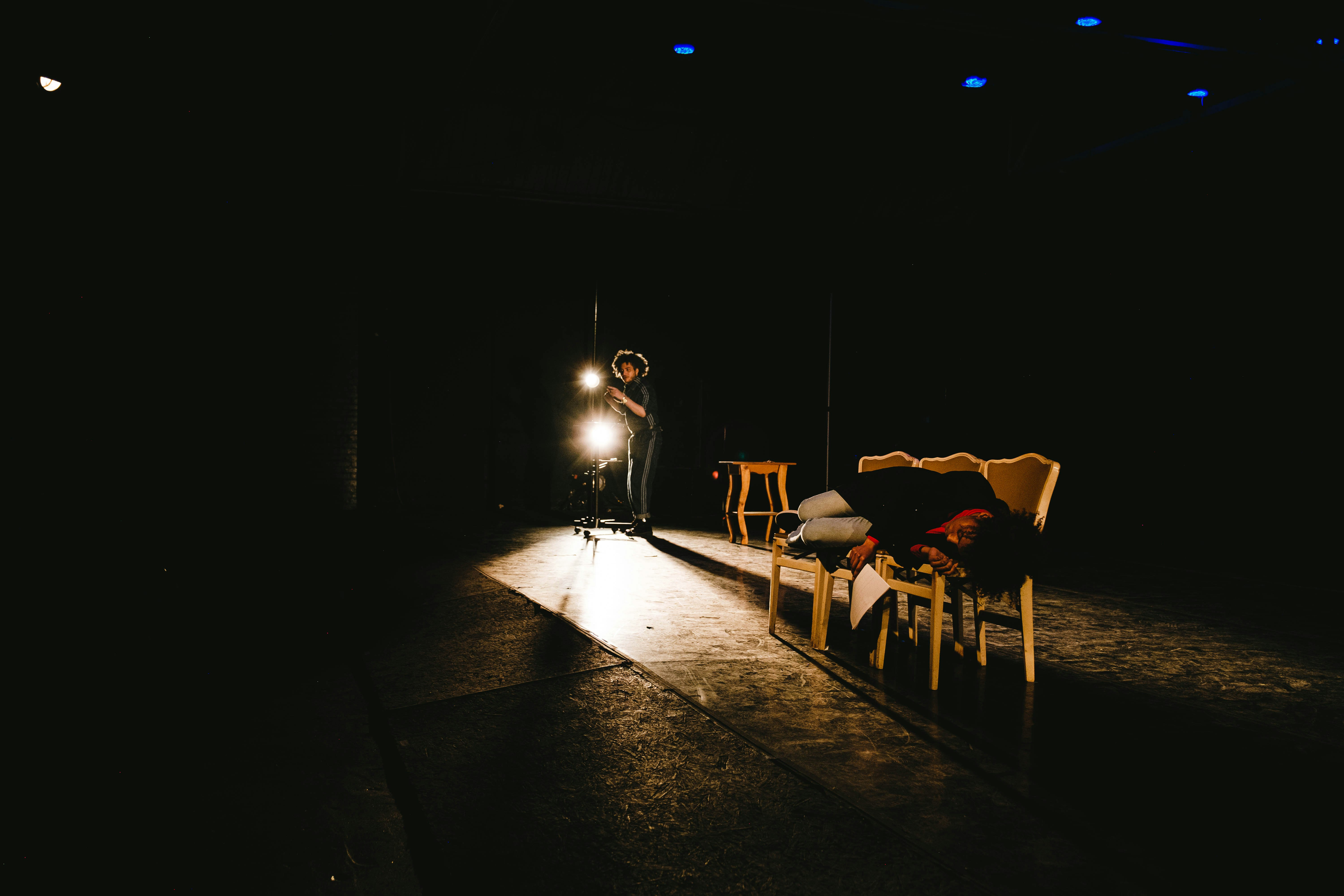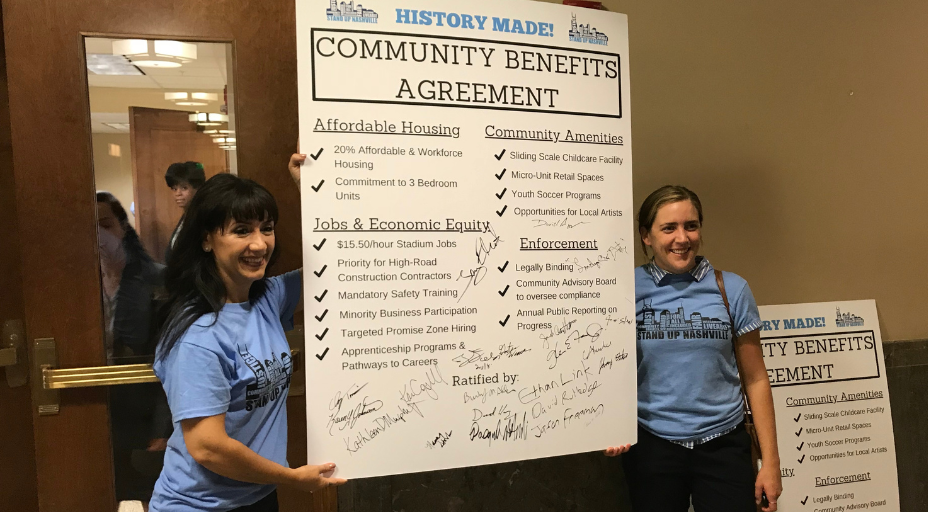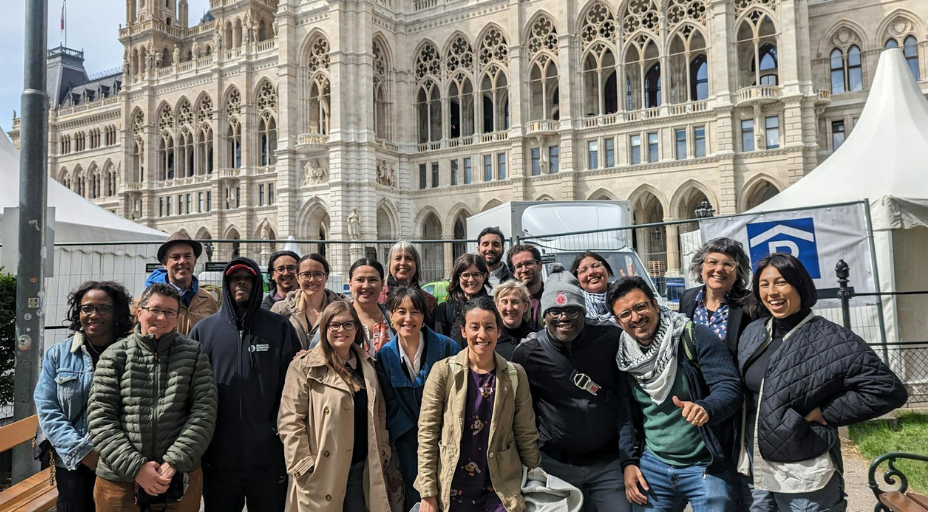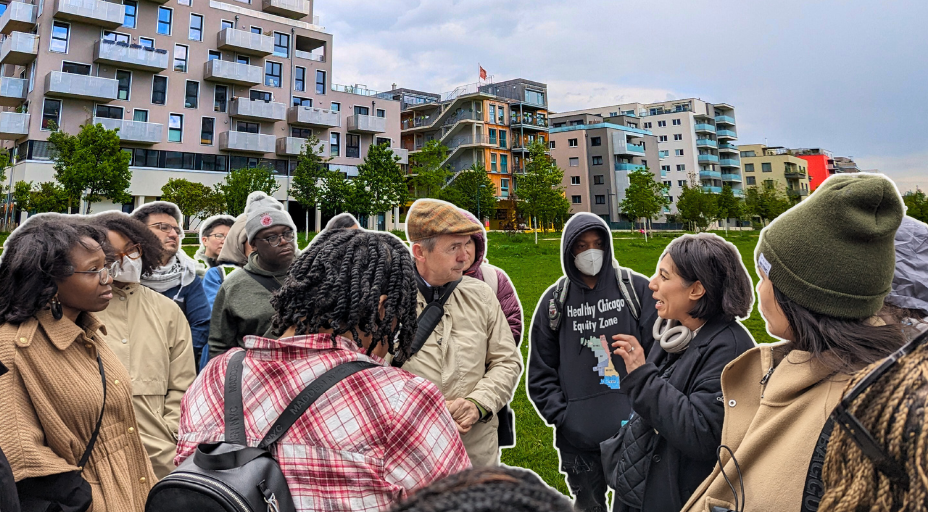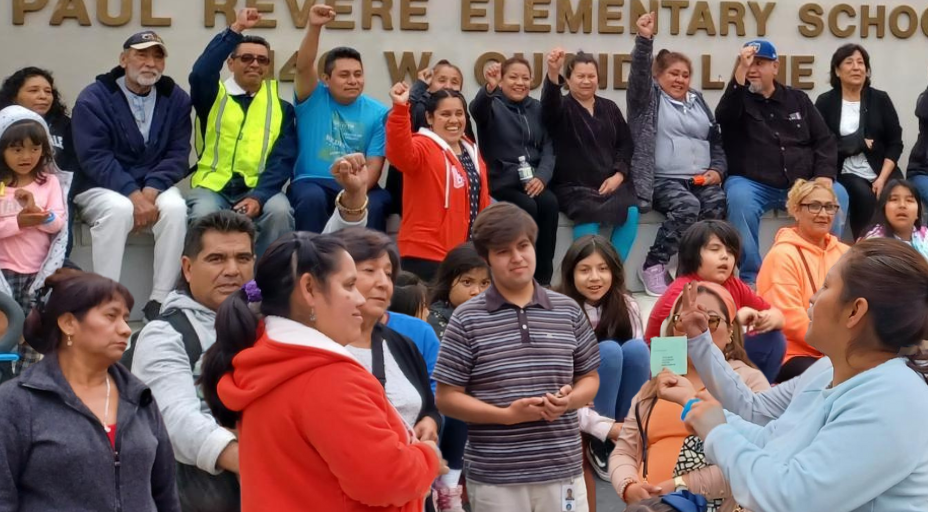By Alonso Hernandez, Creative Lead
Last month I traveled to Detroit, Michigan where I got to go behind the scenes of a brand new theater production called Dot’s Home Live. Originally a video game called Dot’s Home, the show brings audience members into the world of Dorothea (Dot) Hawkins as she time travels to key moments in her family’s history and unravels the impact of racist housing policies that her family has endured for generations.
Our affiliate, Detroit Action, has been fighting for housing justice in the city for years, and we’ve been working with them alongside local artists and community organizers to bring this performance to life. In the original videogame, which we co-produced with Rise-Home Stories Project, the player time travels with Dot and makes decisions that impact her family’s future. In the live show, the entire experience is transformed from an individual one to a collective one, where the audience is prompted to make choices that change the direction of the story.
I was able to attend a work-in-progress showing of Dot’s Home Live, where Detroit-based theater group A Host of People collaborated with Detroit Action members and community organizers. I watched the performers run lines and practice on stage, listened to community members share their own stories, and connected one-on-one with the folks directly involved in producing the show.
I only saw the work-in-progress version, but I already know that the full performance will be thoughtful, creative, and moving when it debuts later this June. Here’s why:
It’s a creative and technical feat
After co-producing Dot’s Home the videogame, our Housing and Land Justice Director Christina Rosales began toying with the idea of bringing Dot’s story to life through other media. While some video games have been successfully adapted for film and television, very few have been adapted for the live stage. Through discussions with Detroit Action, the idea of creating something engaging, artful, and collaborative with community eventually took hold. From there, Dot’s Home Live evolved into what it is today: an interactive, community-driven performance that tells a familiar story of housing injustice in Detroit.
The show incorporates designs and visuals from the video game, at times projecting animated scenes and visualizing decision points behind the performers. The show also introduces a new character, 4D, who serves as the bridge between the audience and the performers. 4D offers context and explanation for some of the policies that impact Dot and her family, and also guides the audience through the choices they have to make to drive the story forward. “We want the audience to feel the weight of the choices they make during the show,” shares Christina, who initially developed the concept of a narrator for the show, which the directors later evolved into the character of 4D.
At the end of the show, the decisions that the audience makes can lead to one of three possible outcomes. The script development team (the co-directors of the production, Christina, and one of the producers of the game, Paige Wood) are considering how to express those endings on stage in an impactful way.
It’s a people- and community-driven project
Dot’s Home Live is set in Detroit and nearly every person involved in this project, from the organizers to the performers to the audience members, are connected to the city in one way or another. The show is not just telling the story of a fictional family in Detroit, it is representing the real experiences of many Detroiters who have built safe, beloved homes while simultaneously navigating racist policies and systems. Throughout the work-in-progress showing, community members were invited to react to the performance, share their own stories, and give feedback on the script to make it more authentic and true to their lived experiences.
I asked Christina, who is also the executive producer of the show, why co-creation is such an important element of Dot’s Home Live. “It is artists and organizers and the community collaborating together to make something,” she said. “The actors are going to activate this script and the audience will react to it and be able to shape where it goes next.” There were moments where audience members suggested different words or phrases, and others where they simply cheered for Dot or boo-ed at the villain.
After the showing, there was a community forum where folks shared what the performance meant for them. There was so much energy and emotion in the room, and it was clear how much Dot’s story resonated with the audience. As I left the theater, I overheard a young boy telling his mom that Dot’s Home Live was the “best movie” he’d ever seen.
It’s a powerful organizing tool
What makes Dot’s Home Live so powerful is that the story is grounded in the lived experiences of real Detroiters and the organizing work that Detroit Action is doing on the ground. Many of the folks who attended the showing know firsthand what it is like to deal with an eviction notice, or predatory companies, or being displaced. What the show does, specifically through the character of 4D, is offer context and terminology that affirm the audience’s reality and reveal how there are larger structural issues at play working against them.
The show proposes new ways to think about and engage people around housing justice. For Anthony Baber, Director of Communications and Culture at Detroit Action, it can provide a pathway for folks who have experience with local housing issues to get connected.
“It’s an opportunity to get people engaged, to present [these issues] in different ways, to speak truth to power, and to call out the inequities that we see in the most necessary spaces.”
What’s more, blending arts and culture with organizing strategies can be a way to disrupt old narratives and myths, and envision new ones that actually work for us. We’re living with “dominant narratives of meritocracy and individualism and scarcity,” says Christina. “Those are just the air we breathe, but it doesn’t have to be that way. Art and culture brings joy and expression, and it can breathe life into a movement if we let it.”


